“What is an NFT?” is a common question among those who are new to the world of blockchain and digital assets. In the last year, there has been a significant buzz around NFTs or Non-Fungible Tokens. From art to collectables to gaming and more, everything is selling on various platforms digitally through NFTs. To keep up with the trend and make the most of the opportunities it provides, it is essential to understand what is an NFT in detail. In this blog, we will also discuss the most commonly asked questions like how does NFT work and what makes an NFT valuable.
What is an NFT?
NFTs gained worldwide popularity in 2020 though the technology has been around for a while now. This also raises the question asking what is an NFT. NFT is an abbreviation for Non-Fungible Tokens. Non-Fungible means not replaceable or irreplaceable. This refers to these transactional tokens being permanent. The tokens are issued for the digital assets being sold and bought online through cryptocurrencies and stored on blocks in blockchains. These digital assets are unique real-world objects such as photos, audio files, videos, etc. NFTs act as the digital record of ownership of the product.
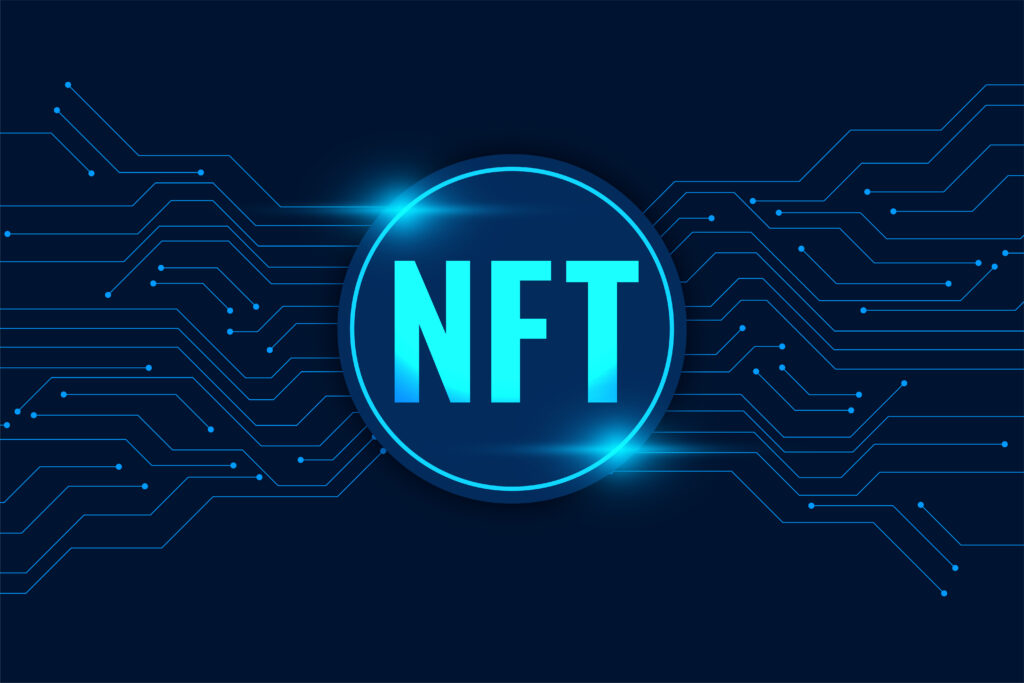
NFT has, however, held a reputation for being unpredictable and prone to scams. In short, the technology has not been reliable and trustworthy for a common man to invest in. But many who have taken the risk have proven it to be fruitful. Nonetheless, it is slowly becoming a vital part of our digital world, and getting a clear understanding has become a necessity than a choice now.
Fungible vs Non-Fungible
Fungibility refers to the property of trading an item for another similar or identical item. It is the ability for any commodity or asset to be mutually interchangeable with commodities of the same type. Hence, fungible means interchangeable. The fungibility of any item is determinable by the interchangeable or replaceable property it holds. Whereas, people can exchange tokens that act as vouchers in place of any goods, or services. Ever since the boom of NFTs, everybody is curious to know what non-fungibility means and how is it different from fungible tokens.

Fungible
Fungible tokens are divisible and not unique. This means that the value of a fungible token remains the same anywhere in the world and hence, it is interchangeable. For example, a ten rupee note is going to be worth ten rupees anywhere in the world. And hence, one can use it worth ten rupees anywhere in the world. Similarly, all cryptocurrencies are also fungible tokens. 1 BTC is worth 1 BTC wherever it is issued.
Non-Fungible
Non-Fungible tokens, in contrast to fungible tokens, are non-divisible and unique in nature. These items are non-replicable and irreplaceable. For example, if A person borrows B person’s car, he cannot return any other car to A. Even if the car he wants to return is of the same model and making. This shows that person A’s car is not interchangeable. Since person A holds individual ownership of his unique car, cars are non-fungible assets. Similarly, non-fungible tokens represent digital ownership of intangible and unique items.
History of NFT
Before understanding how does NFT work and what makes an NFT valuable, it is important to dive back into the history of NFT and understand its origin.
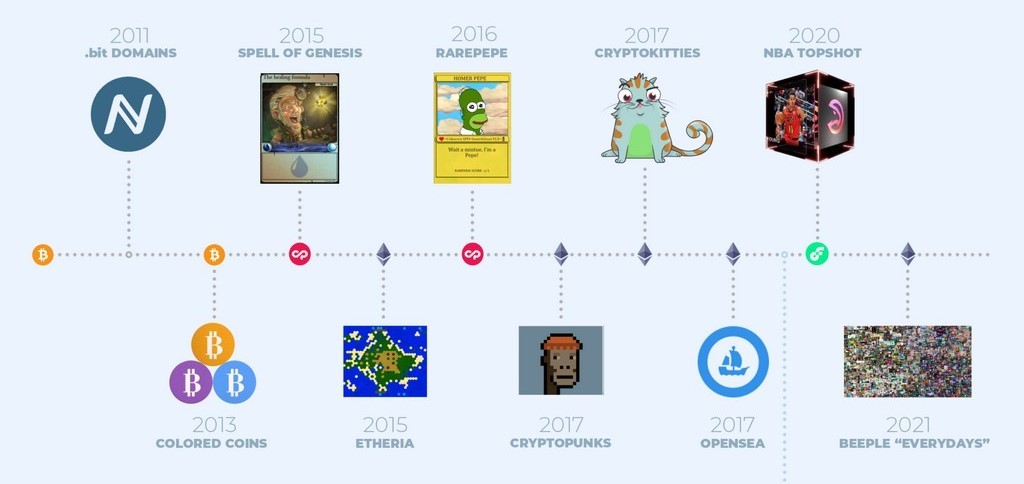
2012 – Introduction of NFT
The origin of NFTs dates back to 2012 when a paper by Meni Rosenfield was released that introduced the concept of “Coloured Coins” in the Bitcoin blockchain. These coloured coins represented the smallest denomination of Bitcoins. It could be as small as a single Satoshi which is the smallest unit of bitcoins. This was similar to Bitcoins but had a ‘token’ element to it which determined its use and uniqueness. This idea was to represent and manage real-world assets in blockchains and to prove ownership of these assets. In simple words, some bitcoins were to be coloured differently to segregate them according to their uniqueness. However, due to the limitations posed by Bitcoins, the coloured coins concept couldn’t be capitalized.
2014 – 2016
After Colored Coins, many realized the potential of NFTs. In 2014, the Counterparty was introduced. Counterparty was a peer-to-peer financial platform that was built on top of the Bitcoin blockchain and brought in decentralized exchange. In the following year 2015, the Spell of Genesis brought game assets into blockchain and launched tokens called BitCrystals. After the entry of the popular trading card game, Force of Will, into blockchain in 2016, it was only a matter of time before memes would join in. In 2016, people began to issue memes called “Rare Pepes” on Counterparty.
2017 – 2019
In 2017, Ethereum started gaining popularity, and with that NFTs went mainstream. Hence, the trading of memes started there as well. This big shift of NFTs to Ethereum brought in the introduction of a set of token standards. These tokens are created by developers. Witnessing the success of Rare Pepes, two software developers created their own generative series of NFTs on the Ethereum blockchain branded as CryptoPunks. Followed by this, a virtual game-based Ethereum blockchain NFTs called CryptoKitties was introduced in October 2017. They traded virtual cats. 2018 and 2019 also saw massive growth in NFTs through thriving marketplaces like OpenSea and SuperRare.
2021 – The Year of NFT
However, 2021 was the year of the NFT. The huge explosion in NFT was seen mainly when renowned auction houses along with auctioning online, also started selling NFT art online. This gave other blockchains such as Tezos, Flow, Cardano, and Solano, the confidence to create and start trading NFTs. With the flow of new NFT blockchains, a set of ground rules were established to determine the uniqueness of the digital assets created and traded.
How Does NFT Work?
NFTs are unique crypto tokens managed on blockchains. Hence, blockchains act as decentralized ledgers. The ownership of the digital assets can be traced through these blockchains along with the transaction history of each NFT. Each transaction has a unique code and ID. Hence, it cannot be duplicated.
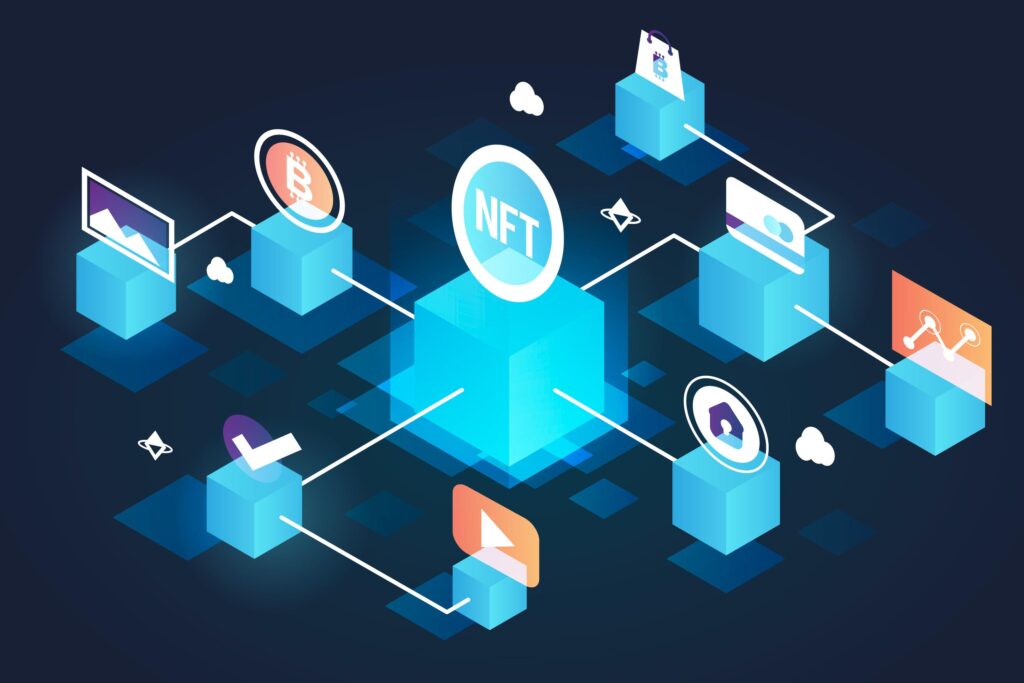
NFTs are created through a process called minting. Minting is a process where NFTs are recorded in blocks of a blockchain. NFTs majorly exist on Ethereum blockchains. Through minting, one can store their art, document, or any non-fungible asset on a blockchain and receive a unique certificate or code for the same. Hence, ensuring that their asset is secure and cannot be replicated. The assets are secure from forgery and also are now valued. The value, however, can change.
This process is done through contract-enabled blockchains with the help of appropriate support and tools. These tokens with their smart contracts allow the addition of additional information to the NFTs such as the owner’s identity and any other information required.
There are two important factors involved in creating NFTs required to understand how NFT work – Scarcity and Royalty.
Scarcity –
The owner of the NFT gets to decide the number of copies of the NFT that he would like to create and put up. The lesser the number of copies, the higher the bid. In other words, if the NFT is rare, then the chances of it being sold at a higher price are also high.
Royalty –
Royalties refer to a recurring payment made to the creator or primary owner of the NFT whenever the NFT is resold. A percentage of the value of the NFT is given to the owner. This is possible because of the unique attributes of NFT and the decentralized nature of blockchains.
Buying and Selling NFTs
NFTs are highly valuable and unique and hence, can cost the buyer a lot. Hence, it is advisable to research well about the NFT before proceeding with the purchase. Once one gets an understanding of what is an NFT and how does NFT work, one can buy and sell NFTs through the following steps –
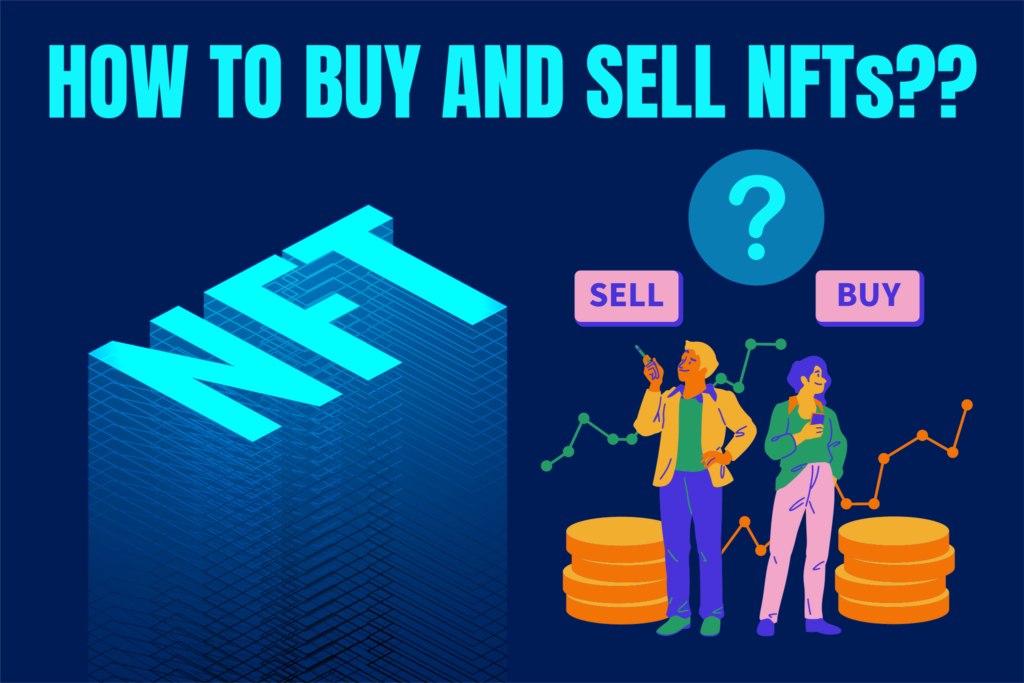
1. Set Up a Digital Wallet –
In order to buy or sell NFTs, one has to set up a digital wallet that supports NFTs. There are many different digital wallets available, such as MetaMask, MyEtherWallet, and Coinbase Wallet. When choosing a wallet, it is important to select one that is secure and has good feedback from previous users.
2. Connect Wallet to an NFT Marketplace –
The second step is to connect the digital wallet to an NFT marketplace such as OpenSea, Rarible, or SuperRare. These marketplaces act as platforms for buying and selling NFTs. They also provide a user-friendly interface for discovering and buying NFTs. It is, however, very important to find a secure digital wallet to protect your assets and currencies from theft or loss.
3. Fund your Wallet –
The most commonly used cryptocurrency for NFTs is Ethereum (ETH). The digital wallet has to be funded with cryptocurrencies like ETH in order to make a purchase.
4. Browse and Search for NFTs –
This step is in the case of buying NFTs. There are several filters available on the marketplaces. So, one can sort and search for NFTs according to their preference. It is essential to read the detailed information provided about each NFT before making a purchase.
5. Make a purchase –
In order to make a purchase, one has to simply select the chosen NFT and click on “Buy” and confirm the transaction through their digital wallet. Once the transaction is through, the NFT will be transferred to the digital wallet and the buyer will become the new owner of the NFT.
To sell an NFT, one has to list the NFT for sale on the marketplace along with the price, detailed information about the product, and other necessary details. Once a buyer expresses interest in buying the NFT, the seller can confirm the transaction through their digital wallet and receive the cryptocurrency (ETH) in their wallet.
Use of NFTs
NFTs can represent a wide range of digital assets. The most popularly used ones are –
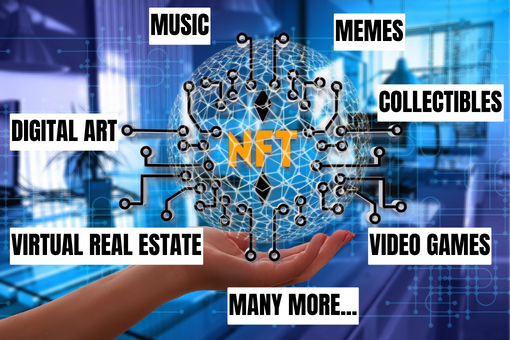
1. Digital Art –
One of the most popular uses of NFTs is to sell and trade digital art. This can include digital paintings, illustrations, animations, and other forms of digital art.
2. Music –
NFTs can also be used to sell and trade music, including individual tracks or entire albums. This allows musicians to monetize their work and provide fans with a unique, one-of-a-kind collectible.
3. Collectibles –
NFTs can also represent collectibles, such as virtual real estate, virtual trading cards, and other unique digital items. These NFTs can be bought and sold just like physical collectibles and can increase in value over time. The most popular one is the Bored Ape Yacht Club.
4. Video Games –
NFTs can be used to represent unique in-game items, such as rare weapons and accessories. These NFTs can be traded between players to monetize their progress in a game.
5. Virtual real estate –
Trading of virtual real estate, such as plots of land in the virtual world or cities, can also be used in NFTs. Similar to collectibles, these are also bought and sold like physical real estate. And their value can increase as the population of the land increases.
6. Memes –
The most surprising item though has to be the trading of memes through NFTs. Memes have now become a valuable digital asset.
These are just a few examples of the many types of NFTs that are being used in today’s world and what makes an NFT valuable. The uses of NFTs, however, are constantly expanding and new types of NFTs are being created.
What makes an NFT valuable?
Many people are curious to understand what makes an NFT valuable and unique. Several factors contribute to the value of NFTs. Its most important features are –
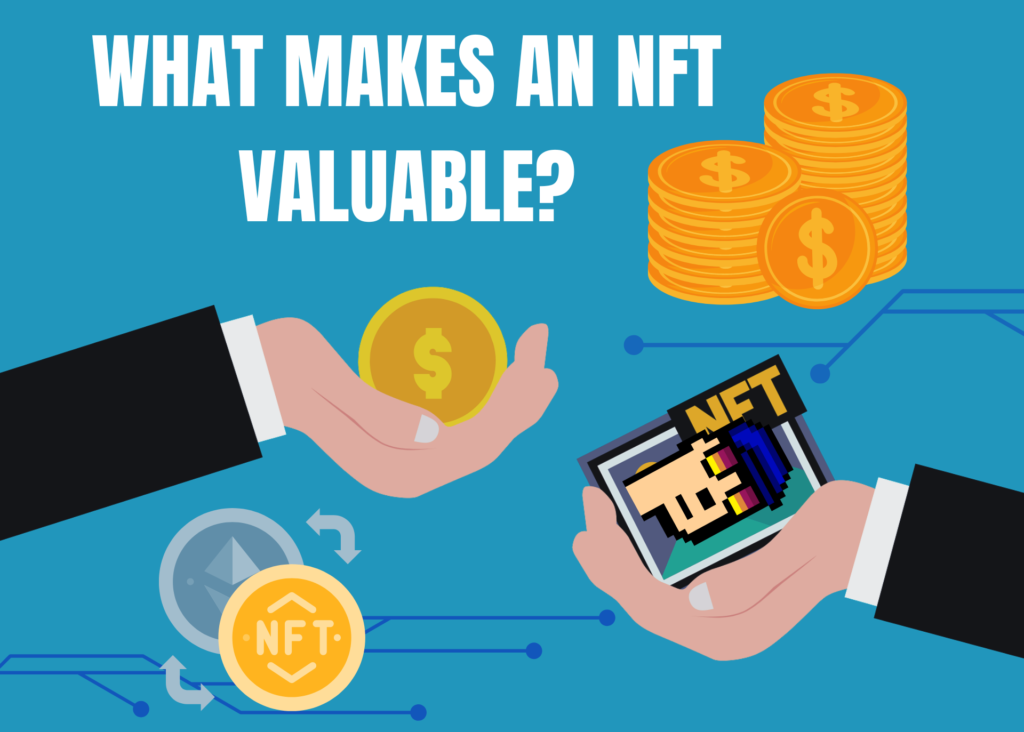
1. Rarity –
NFTs are unique, one-of-a-kind digital assets that cannot be replicated or duplicated. This rarity can make NFTs highly sought after and valuable.
2. Utility –
Some NFTs provide their owners with unique benefits or access to exclusive content or experiences. For example, owning a specific NFT might grant one access to special in-game items, premium content, or early access to certain events or releases.
3. Creator Reputation –
The reputation of the artist or creator behind an NFT can also impact its value. NFTs created by well-known artists, musicians, or game developers can be more valuable than NFTs created by unknown or less established creators.
4. Historical Significance –
NFTs that have a history of ownership or are associated with notable events can also increase in value over time. For example, an NFT that was sold at a high price during a previous NFT auction might become more valuable as time goes on.
5. Scarcity –
As more NFTs are created and enter circulation, the scarcity of certain NFTs can increase their value. If there are a limited number of NFTs available for a digital asset, demand for those NFTs might increase, driving the price up.
The value of NFTs is subjective and can change over time. However, the above-mentioned factors make NFTs highly valuable for both collectors as well as sellers. This makes it essential to learn what is an NFT and how does NFT work.
Recommended Courses:
Understanding what is an NFT is the first step to fully understanding what makes an NFT valuable and the uniqueness it brings to the world of art and collectibles digitally. Blockchains, cryptocurrencies, and bitcoins are becoming the future of everything in this world. It is essential to upgrade your skills accordingly to stay relevant and useful. There are several courses online through which one can learn more about these topics. One such course is –
Henry Harvin Blockchain Academy – Bitcoin Specialist Course

The demand for cryptocurrencies is rising day by day. And there is a huge demand for jobs in this field. Henry Harvin’s Bitcoin Specialist Course dwells on various important topics including NFTs. Hence, answering important questions like what is an NFT, how NFT work, and what makes an NFT valuable. With an average salary of 12 LPA in the market, a Bitcoin Specialist’s job is a great way to kickstart your career in the blockchain industry.
Duration –
16 Hours
Fee Structure –
One has to contact the academy directly to get the updated fee structure.
Reasons to Choose Henry Harvin’s Bitcoin Specialist Course –
In addition to 16 hours of live interactive online classes, the academy offers 24 hours of boot camp sessions in the course of a year. The learner can also attend unlimited batches for the next 1 year. The trainers of Henry Harvin are professional experts with over 10 years of experience in the industry with global certification. The learner also gets access to Henry Harvin’s E-learning portal.
The syllabus includes the following trending topics in addition to the basics –
- Fundamentals of bitcoin
- Bitcoin ecosystems like bitcoin marketing, bitcoins, and bitcoin faucets. Algorithms of bitcoin mining pools and hardware
- Bitcoin technical elements like Open Source Software
- Architecture security and maintenance risk
- Bitcoin IRC channels and IRC clients
- Hands-on experience working on Blockchain technology tools
Certification in Blockchain fundamentals can upgrade one’s CV. Hence, opening up new career avenues in this domain.
The course is also available in cities like Allahabad, Bhopal, Chennai, Delhi, Ernakulam, Jaipur, Mysore, and Nagpur.
Similar Courses
- Blockchain Course
- Bitcoin Course
- Blockchain Developer Course
- Selenium Course
- Post Graduate Program in Blockchain
Conclusion
In conclusion, the future of NFTs is full of potential and is growing fast. As the use and popularity of NFTs increase, we can see more innovative uses of this technology. Through this, we can also hope to see an increase in security, transparency, and stability in the world. For those who are unfamiliar with the concept of blockchain domains, the questions – what is an NFT, how does NFT work, and what makes an NFT valuable, are the natural starting points to a long journey of understanding NFTs and investing in them.
Recommended Reads –
- Top 25 DevOps Interview Questions and Answers in 2023
- Top 10 Online IT Certification Courses in Demand for 2023
- 10+ Best SAP Training Institute Online (Exposed)
- Top 90 AWS Interview Questions and Answers in 2023
- What is SAP Certification? Eligibility, Advantages, and Cost in 2023 (Exposed)
Frequently Asked Questions
AN NFT, or non-fungible token, is a unique digital asset that is verified using blockchain technology. Since NFTs cannot be replicated, it is gaining popularity as an investment opportunity in the world of art and collectibles.
NFTs work by using blockchains to verify and manage the uniqueness and ownership of digital assets. NFTs are stored in blocks. It can be sold, bought, or traded in marketplaces.
The value of NFT lies in its uniqueness and rarity. What makes an NFT valuable is that it has a one-of-a-kind property that is verified on the blockchain. In addition to this, NFTs represent the ownership of digital assets by individuals.
NFTs can be bought or sold on online marketplaces such as OpenSea and Rarible, and SuperRare. However, it is necessary to research well about the NFTs to understand the risks involved and own a trusted digital wallet for the transactions.
Blockchain uses a decentralized ledger to verify, authenticate and, store NFTs and all their related information. Each NFT transaction recorded has a unique code and ID that cannot be duplicated. This is also an answer to how does NFT work.

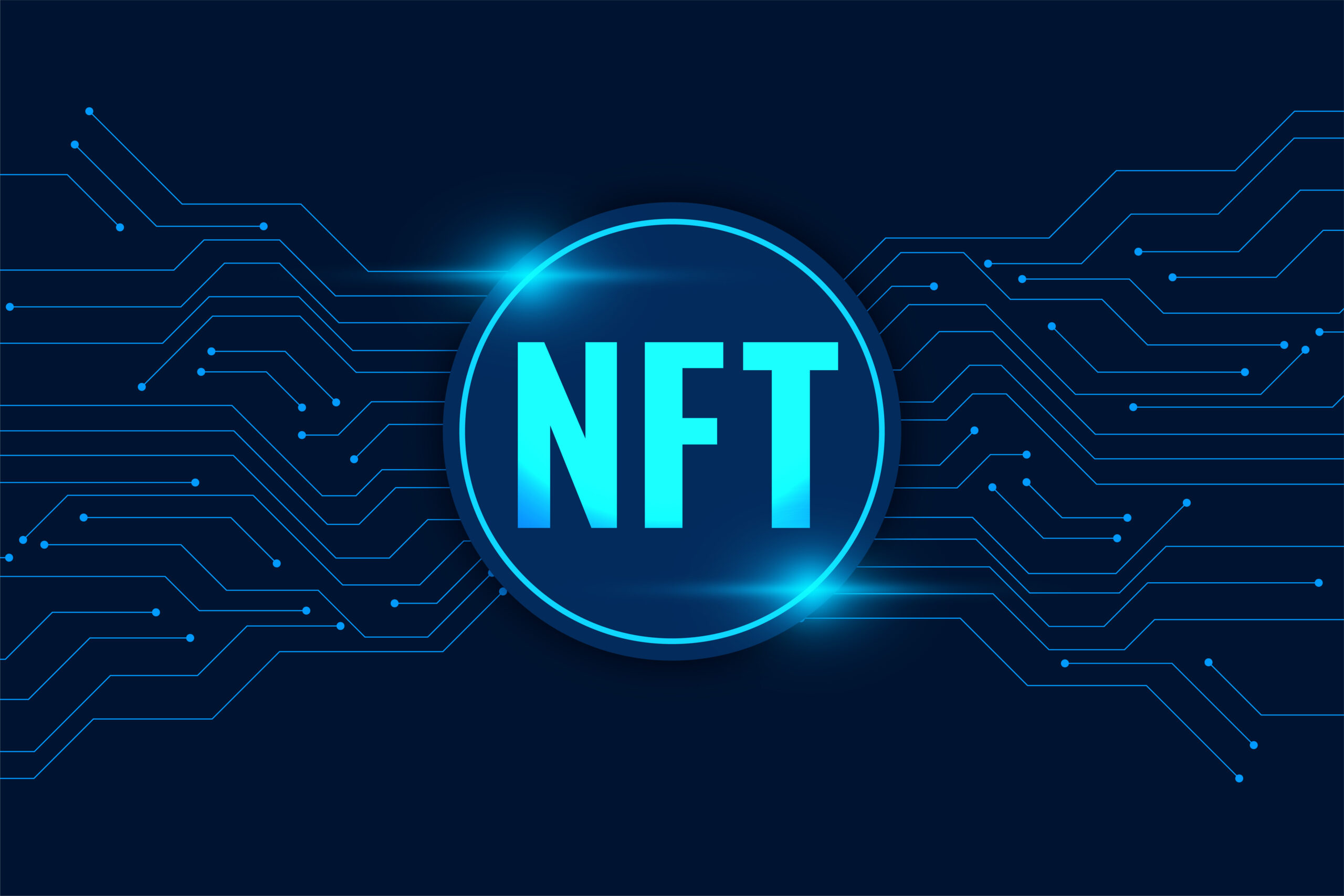


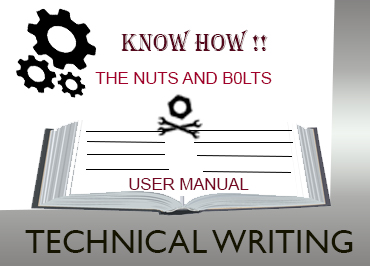

Teh concepts such as Bitcoin, and cryptocurrency is always a difficult topic for me. being a techno-geek, me always wanted to keep myself updated wif current technologies. me appreciate your efforts in explaining wat is NFT and how exactly it works.